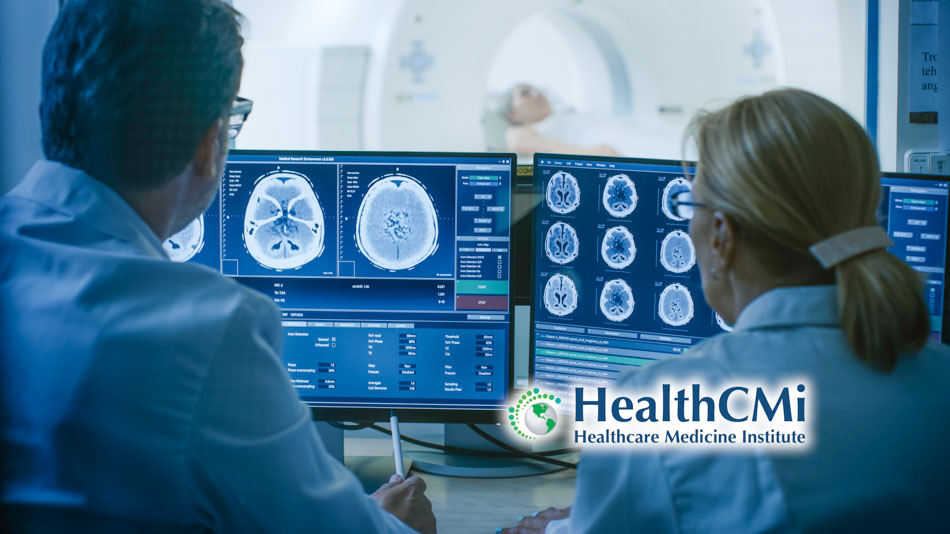
A randomized controlled trial conducted at Xi’an Jiaotong University demonstrated that acupuncture significantly reduced postconcussion symptoms (PCS) in patients with mild traumatic brain injury (mTBI) and improved white matter microstructure as measured by diffusion tensor imaging (DTI). DTI is an advanced form of magnetic resonance imaging (MRI) that measures the diffusion, or movement, of water molecules in brain tissue. Unlike conventional MRI, which shows anatomical structure, DTI can detect microstructural changes in white matter tracts by mapping how water diffuses along axons. The study confirmed both short-term and long-term efficacy, establishing acupuncture as the only intervention in the trial to produce durable clinical and radiological benefits [1].
Sixty-six patients with acute mTBI were recruited and randomized to three groups: verum (true) acupuncture, sham acupuncture, and waiting-list control. The primary outcome was change in Rivermead Post-Concussion Symptoms Questionnaire (RPQ-16) scores. Baseline and post-treatment MRI scans provided neuroimaging correlates of white matter integrity.
Patients receiving verum acupuncture achieved significant reductions in postconcussion symptoms (PCS). RPQ-16 scores decreased by −5.2 after four weeks of treatment (P = .002) and by −8.1 at six to twelve months (P < .001). The Rivermead Post-Concussion Symptoms Questionnaire (RPQ-16) is a standardized clinical tool used to assess the severity of postconcussion symptoms (PCS) following a mild traumatic brain injury (mTBI). Improvements included headache, dizziness, fatigue, irritability, concentration difficulties, and memory impairment. Sham acupuncture (−1.2) and waiting-list control (−1.5) groups showed no significant changes (P > .05). Thus, only verum acupuncture produced statistically significant and sustained improvements [1].
Two licensed acupuncturists with nine and fifteen years of clinical practice administered the interventions. Each patient received fourteen treatments across four weeks, scheduled three to four times per week. Sessions lasted thirty minutes.
Sterile, single-use stainless steel needles were applied, and insertion continued until deqi sensations were elicited. Stimulation was adjusted by manual manipulation before electrical stimulation was introduced. Electroacupuncture was applied at 2 Hz for thirty minutes using paired electrodes attached to the inserted needles.
The protocol alternated between anterior and posterior acupoint groups. The anterior prescription included Yintang (EX-HN3), Baihui (GV20), Hegu (LI4), Taichong (LV3), Guanyuan (CV4), and Zusanli (ST36). The posterior prescription included Baihui (GV20), Fengchi (GB20), Sanyinjiao (SP6), Xinshu (BL15), Ganshu (BL18), and Shenshu (BL23). Baihui (GV20) was common to both sets. Alternating prescriptions ensured balanced stimulation across treatment sessions.
In the sham group, Streitberger placebo needles were applied to nonacupoints with superficial skin contact but without penetration. No electrical stimulation was used. The waiting-list group received no intervention during the study period [1].
At baseline, patients with mTBI demonstrated reduced fractional anisotropy (FA) compared to healthy controls in multiple regions, including the right cerebral peduncle, anterior limb of the internal capsule, posterior corona radiata (PCR), and cingulum-hippocampus. These regions are associated with cognition, motor function, and emotional regulation [1].
Fractional anisotropy (FA) is one of the key measurements derived from diffusion tensor imaging (DTI). In the brain, higher FA generally indicates intact axonal membranes, organized fiber bundles, and preserved myelin sheaths. Lower FA reflects microstructural injury, which could result from axonal damage, demyelination, or reduced fiber coherence.
Following acupuncture, neuroimaging reveals that patients demonstrated significant FA increases in the right PCR (P < .001). Importantly, FA changes in this region were strongly correlated with reductions in RPQ-16 scores at long-term follow-up (r = 0.723, P < .001), confirming that improvements in white matter microstructure mediated clinical recovery. Sham and waiting-list groups showed no significant FA changes.
Additional FA increases were detected in the splenium of the corpus callosum. Axial diffusivity (AD) also decreased in the right PCR. Together, increased FA and reduced AD suggest enhanced axonal recovery and possible remyelination. These findings provide objective imaging biomarkers linking acupuncture treatment to structural neural repair [1].
Improvements persisted at six to twelve months, with the acupuncture group continuing to show significantly lower RPQ-16 scores than baseline. Sham and waiting-list groups demonstrated no durable change. This finding indicates that acupuncture effects extend beyond temporary symptom management and likely contribute to longer-term neuroplastic adaptation [1].
No serious adverse events were observed. Mild events in the verum acupuncture group included dizziness (18%), fatigue (18%), drowsiness (14%), and localized numbness (9%). These were transient and self-resolving. The sham group reported similar minor events, while no events were reported in the waiting-list group. The absence of severe complications confirms the safety of acupuncture for this patient population when performed by experienced practitioners [1].
This trial is a groundbreaking sham-controlled study to demonstrate MRI-confirmed structural brain changes following acupuncture in patients with mTBI. The robust correlation between FA recovery in the posterior corona radiata and reductions in PCS severity establishes a mechanistic bridge between acupuncture treatment and neurobiological repair.
For neurologists and rehabilitation medicine specialists, the findings underscore acupuncture’s potential as a safe and effective adjunctive therapy for mTBI, a condition for which few durable treatment options currently exist. The demonstration of objective white matter recovery measured by DTI distinguishes acupuncture from conventional interventions, which often lack measurable neurostructural impact.
The durability of symptom improvement and imaging findings suggests that acupuncture may promote brain network reorganization and axonal repair, offering therapeutic benefit beyond short-term symptom relief. This positions acupuncture as a candidate for integration into interdisciplinary care strategies for postconcussion rehabilitation [1].
Source:
[1] Zhuo-Nan Wang, Jin-Ru Lyu, Zhen-Zhen Ma, Zi-Yi Zhao, Ling Zhao, Yu-Qi Liu, Si-Yuan Li, Min Deng, Han Zhang, Tao Gong, Xue-Qiang Wang, Xiao-Ming Zhang, Zhi-Qiang Wang, and Fan-Rong Liang. “Acupuncture Improves MRI Brain Microstructure with Postconcussion Symptoms in Mild TBI: A Randomized Controlled Trial.” Radiology 316, no. 1 (July 2025): e250315.